| |
Heroes and Goats in the Galileo Tradition
Rene
Descartes
Sixteenth century philosopher and mathematician
who developed the coordinate reference frame that underlies the
Galileo system. Descartes also published the principle underlying
the Galileo paired comparison measurement system as Rule 14 of his
“Rules for the Guidance of our Mental Powers. Descartes never
made any measurements himself, though, and remained a platonist
in his own philosophical outlook, reasoning to the fact of his existence
based on his thinking (“I think, therefore I am.”)
Galileo
Galilei
One of the first modern scientists, who became the namesake of the
Galileo System by accident at the University of Illinois. Galileo’s
comparative method lies at the basis of contemporary Galileo theory
and method.
Sigmund
Freud
Freud called himself an explorer rather than a scientist,
but will mainly be remembered for his failed attempt to save Aristotle’s
theory by suggesting that human actions that seemed to lack a motive
really were the result of unconscious
motives.
Emile
Durkheim
Late 19th and early 20th century sociologist who focused attention
on the collective consciousness as the
average of beliefs and attitudes, a cornerstone of
Galileo theory and method.
L.
L. Thurstone
20th century psychologist and psychometrician who believed that
attitudes and abilities could be arrayed as vectors in space. His
most famous development was factor analysis, an early forerunner
of the Galileo model still in widespread use today.
William
H. Sewell
20th century sociologist who developed methods for
measuring social stratification and pioneered in the area of educational
and occupational attainment research. Sewell also served as chancellor
of the University of Wisconsin and President of the American Sociological
Association.
Arch Haller
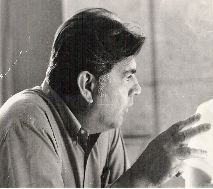 A colleague of Sewell who helped develop
The Wisconsin Model of Status Attainment, Haller was one of the
first to understand status and stratification in a dynamic rather
than static way. He conceived of a person’s status not as a
place or level, but as a lifetime trajectory, and developed many
concepts and instruments to measure these trajectories, including
the Occupational Aspiration Scale and the Wisconsin Significant
Other Battery with Joseph Woelfel. The Occupationa Aspiration Scale
was actually a Thurstone-type scale, although the method Haller
used to construct it was superior to the method suggested by Thurstone.
Rather than asking respondents to rate a set of occupations, then
q-sort them and build a Thurstone scale, Haller took occupations
whose occupational prestige was already measured carefully on national
samples by NORC, and was able to establish a unidimensional spatial
array of approximately evenly spaced occupations, thus providing
the elementary beginnings of the space of occupations hypothesised
by Woelfel and first measured by Saltiel. A colleague of Sewell who helped develop
The Wisconsin Model of Status Attainment, Haller was one of the
first to understand status and stratification in a dynamic rather
than static way. He conceived of a person’s status not as a
place or level, but as a lifetime trajectory, and developed many
concepts and instruments to measure these trajectories, including
the Occupational Aspiration Scale and the Wisconsin Significant
Other Battery with Joseph Woelfel. The Occupationa Aspiration Scale
was actually a Thurstone-type scale, although the method Haller
used to construct it was superior to the method suggested by Thurstone.
Rather than asking respondents to rate a set of occupations, then
q-sort them and build a Thurstone scale, Haller took occupations
whose occupational prestige was already measured carefully on national
samples by NORC, and was able to establish a unidimensional spatial
array of approximately evenly spaced occupations, thus providing
the elementary beginnings of the space of occupations hypothesised
by Woelfel and first measured by Saltiel.
As a result of his work on stratification in Brazil was Decorated
by order of the President of Brazil, Decree of October 22,
1981, with the ORDER DO MERITO DO TRABALHO, GRAU DE GRANDE OFICIAL
(Order of Merit of Labor, Rank of Grand Officer). (Presented 15
December 1981, in Brasilia.) Haller’s guidance and support
made the Galileo System possible. Sine qua non is Latin for
“without which not.” That would be Haller. Thanks, Arch!
Herbert
Blumer
A student of George Herbert Mead who is one of those most responsible
for recording and publishing Mead’s thoughts. Blumer’s
definition of object as “...anything that can be designated
or referred to” is the one used in the Galileo system.
Blumer was the leader of the Interactionist faction that believed
human experience was too “volatile and evenescent” to
be studied scientifically, but rather needed the qualitative, intuitive
understanding of a sensitive human being. In this Blumer is exactly
backward in his thinking. Scientific procedures and the mathematical
language were invented precisely because the categorical nature
of natural human language was insufficiently precise to observe
the volatile and evenescent processes of nature in any but a crude
way. That’s why Newton and Leibnitz developed the calculus
in the first place.
Gale Young
Mathematician who, with Householder, developed the fundamental algorithm
underlying the Galileo System.
Alston Householder
20th century psychologist who, with Young, published the procedure
for scaling objects in space based solely on their interpoint distances
in 1938.
Warren Torgerson
20th Century psychologist whose modification of the Young-Householder
algorithm formed the basis of metric multidimensional scaling. His
outstanding 1958 textbook “Theory and Method of Scaling”
was fundamentally important to the development of the Galileo System
scaling method, and his willingness to talk and teach impudent
young workers was vital to helping develop the Galileo method.
Joseph
Kruskal
20th century psychometrician who, simultaneously and independently
with Roger Shepard, developed non-metric multidimensional scaling
based on the assumption that only the ordinal properties of psychological
measurements could be trusted. Helped teach a whole generation of
social scientists that poor measurement was acceptable, and could
be fixed by heroic mathematical procedures after the fact.
Roger
Shephard
Helped put an end to the very precise measurement procedures championed
by L. L. Thurstone and Warren Torgerson by his codevelopment of
non-metric scaling procedures.
Joseph Woelfel
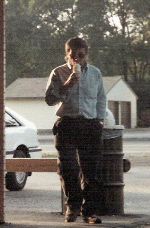 The badly twisted mind who conceived of
The Galileo System and guided it’s development from the beginning.
A student of Arch Haller who also studied with William Sewell and
others at the University of Wisconsin, his understanding of Aristotle
and the Greeks came from Thomas McGovern at Canisius College. The badly twisted mind who conceived of
The Galileo System and guided it’s development from the beginning.
A student of Arch Haller who also studied with William Sewell and
others at the University of Wisconsin, his understanding of Aristotle
and the Greeks came from Thomas McGovern at Canisius College.
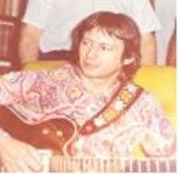
Edward
L. Fink
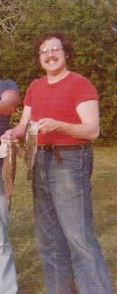 Contemporary communication scientist who
worked with Woelfel on the Wisconsin Significant Other Project,
and later at Michigan State University, Professor Fink had a great
influence on Woelfel’s mathematical development, and went on
with Stan
A. Kaplowitz to model attitude change as a damped
harmonic oscillatory system, work which is even now decades ahead
of contemporary scientists. Contemporary communication scientist who
worked with Woelfel on the Wisconsin Significant Other Project,
and later at Michigan State University, Professor Fink had a great
influence on Woelfel’s mathematical development, and went on
with Stan
A. Kaplowitz to model attitude change as a damped
harmonic oscillatory system, work which is even now decades ahead
of contemporary scientists.
George
Barnett
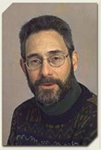 Student and later colleague of Woelfel, Barnett is the most prolific
Galileo worker of all time. His work on the precision, reliability
and validity of the Galileo System lies at the core of the model.
Previously chair of the Communication
Department at the University at Buffalo,
State University of New York, he is now one of the premier network analysts in the world. Student and later colleague of Woelfel, Barnett is the most prolific
Galileo worker of all time. His work on the precision, reliability
and validity of the Galileo System lies at the core of the model.
Previously chair of the Communication
Department at the University at Buffalo,
State University of New York, he is now one of the premier network analysts in the world.
Gayle Wisan
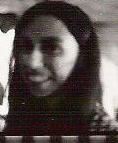 Wrote the first Ph.D. dissertation to employ Galileo analysis.
Wrote the first Ph.D. dissertation to employ Galileo analysis.
John Saltiel
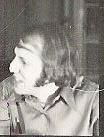 A major figure in the development of the
Theory of Linear Force Aggregation, Saltiel’s work on occupational
choice was the first to validate the idea that the aggregate meaning
of a set of disparate categorical expectations was given by the mean of their coordinates in Galileo space. A major figure in the development of the
Theory of Linear Force Aggregation, Saltiel’s work on occupational
choice was the first to validate the idea that the aggregate meaning
of a set of disparate categorical expectations was given by the mean of their coordinates in Galileo space.
James
Gillham
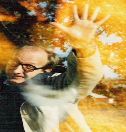 Applied powerful econometric models to three
point in time longitudinal data to give early support to the precision,
reliability and equivalence to traditional measures of the Galileo
model. An expert in residential burglary. Applied powerful econometric models to three
point in time longitudinal data to give early support to the precision,
reliability and equivalence to traditional measures of the Galileo
model. An expert in residential burglary.
Donald
Hernandez
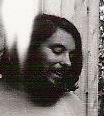 A major figure in the development of the
Theory of Linear Force Aggregation, Hernandez is now Professor of
Sociology at the University at Albany. A major figure in the development of the
Theory of Linear Force Aggregation, Hernandez is now Professor of
Sociology at the University at Albany.
Curtis
Mettlin
Worked on the Theory of Linear Force aggregation, and applied the
model successfully to the study of the causes of smoking. Mettlin
developed a foolproof method for smoking cessation which involved
cutting of the smoker’s lips, and is now Director of something
at Roswell Park Memorial Cancer Institute.
Glenna
Spitze
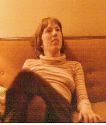 Part of the original Illinois team, including
George Barnett, John Saltiel, Gail Wisan, Curt Mettlin, and Don
Hernandez, Glenna computed innumerable regression equations helping
understand the Linear Force Aggregation Theory, and went on to be
a major figure in Sociology. Part of the original Illinois team, including
George Barnett, John Saltiel, Gail Wisan, Curt Mettlin, and Don
Hernandez, Glenna computed innumerable regression equations helping
understand the Linear Force Aggregation Theory, and went on to be
a major figure in Sociology.
Kim Serota
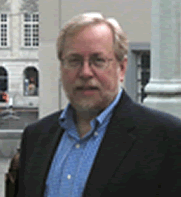 The first person to develop FORTRAN source code to make Galileo
independent of SOUPAC software, Serota wrote several seminal papers
detailing the mathematics of early Galileo theory (some have recently been revised and are available in Communication & Science Journal at http://www.galileoco.com/comSciJ/comSciJ.asp). He is also the
discoverer of Richard A. Holmes. The first person to develop FORTRAN source code to make Galileo
independent of SOUPAC software, Serota wrote several seminal papers
detailing the mathematics of early Galileo theory (some have recently been revised and are available in Communication & Science Journal at http://www.galileoco.com/comSciJ/comSciJ.asp). He is also the
discoverer of Richard A. Holmes.
Richard A. Holmes
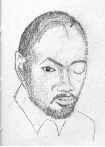 A simple programmer who was the principle writer of Galileo software
from 1973 until his untimely demise in 1986. (He made me say that
simple programmer thing. He was as good as anyone ever gets and RAH press is named after him.)
A simple programmer who was the principle writer of Galileo software
from 1973 until his untimely demise in 1986. (He made me say that
simple programmer thing. He was as good as anyone ever gets and RAH press is named after him.)
Nick
Stoyanoff
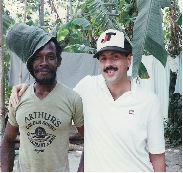 President of Terra Research & Computing during the 1990’s,
Stoyanoff cowrote several important papers on applications of the
Galileo System, and is probably the single person most responsible
for commercial applications. President of Terra Research & Computing during the 1990’s,
Stoyanoff cowrote several important papers on applications of the
Galileo System, and is probably the single person most responsible
for commercial applications.
Thomas
Gordon
Thomas Gordon, a professor at Temple University, wrote several early
papers on the reliability, precision and scalability of the Galileo
System which remain today as examples of excellence in measurement.
D.
Lawrence Kincaid
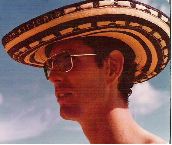 Director of the Communication Theories from Eastern and Western
Perspectives project while a Research Associate at the East West
Center, Kincaid is the person most responsible for the international
character of Galileo Theory. His work on cultural convergence theory
helped establish the precision, reliability and utility of the Galileo
System, and lent support to the model of cognitive processes as
damped harmonic oscillators.
Director of the Communication Theories from Eastern and Western
Perspectives project while a Research Associate at the East West
Center, Kincaid is the person most responsible for the international
character of Galileo Theory. His work on cultural convergence theory
helped establish the precision, reliability and utility of the Galileo
System, and lent support to the model of cognitive processes as
damped harmonic oscillators.
June
Ock Yum
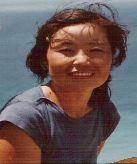 A main force behind the study of the cultural convergence of Korean
immigrants, Yum played an important role in the development of the
Galileo System. A main force behind the study of the cultural convergence of Korean
immigrants, Yum played an important role in the development of the
Galileo System.
Barbara
Newton
Newton’s work on the influences of Television in five countries
was very important in the development of the Galileo theory. A special
program, NEWTON, written by Holmes and Woelfel to assist in the
content analysis of prime time TV in five nations formed the basis
of the technology that became Catpac.
Scott
Danielsen
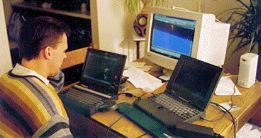 Along with Brickface and Uzo, Scott helped lend new meaning to the phrase “You talkin’ to me?”...dead beat clients beware. All others, however, know him as one of the most helpful people they've ever met. He also co-founded Terra Research and wrote code for Galileo with Joe after Rick. Along with Brickface and Uzo, Scott helped lend new meaning to the phrase “You talkin’ to me?”...dead beat clients beware. All others, however, know him as one of the most helpful people they've ever met. He also co-founded Terra Research and wrote code for Galileo with Joe after Rick.
Rudolph Zelf
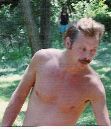 A rare photograph of the rather strange
genius behind Zelf analysis. Way behind. A rare photograph of the rather strange
genius behind Zelf analysis. Way behind.
Chuck Woelfel
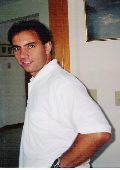 President and CEO of Galileo Marketing systems when it built a nationwide
strategic analysis and tracking system for Domino’s Pizza and
it’s advertising agency, Group 243. Chuck is now President
of CP Woelfel Research Partners, the leading supplier of commercial
Galileo research in the world. President and CEO of Galileo Marketing systems when it built a nationwide
strategic analysis and tracking system for Domino’s Pizza and
it’s advertising agency, Group 243. Chuck is now President
of CP Woelfel Research Partners, the leading supplier of commercial
Galileo research in the world.
John
Cary
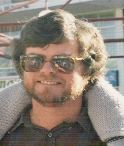 In a series of extraordinary experiments involving agriculture and
agricultural marketing, Cary showed the Galileo to be a powerful
tool for manipulating and tracking cultural attitudes and beliefs.
In a series of extraordinary experiments involving agriculture and
agricultural marketing, Cary showed the Galileo to be a powerful
tool for manipulating and tracking cultural attitudes and beliefs.
Eric Schultz
Known as “Eric the Hippie” to his friends, Schultz took
elements of Rick Holmes code from the mainframe Galileo program,
and, adding some of his own brilliant code, created the free standing
rotation program Microrot. Eric also wrote the Automatic Strategy
Generator, a program that, like the automatic message generator
(AMG), calculates the effective meaning of combinations of concepts.
Unlike the AMG, however, ASG calculates optimal weights for each
concept in a combination.
William
Richards
 The inventor of Negopy,
Richards spent a year on sabbatical at the University at Buffalo
where he and Joseph Woelfel wrote SPOT
and ROVER, neural networks that can learn to hold
a simple conversation.
The inventor of Negopy,
Richards spent a year on sabbatical at the University at Buffalo
where he and Joseph Woelfel wrote SPOT
and ROVER, neural networks that can learn to hold
a simple conversation.
Joe K. Wölfel
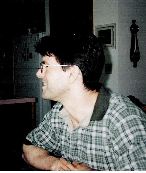 Wrote all the Windows software for Catpac and Galileo including Catpac4 Windows, Catpac II, TerraVision and ThoughtView. Also wrote Wolfpak. With experience in both facial and speech systems pattern recognition, he has now founded a new company. Talkhouse deals strictly with speech recognition.
Wrote all the Windows software for Catpac and Galileo including Catpac4 Windows, Catpac II, TerraVision and ThoughtView. Also wrote Wolfpak. With experience in both facial and speech systems pattern recognition, he has now founded a new company. Talkhouse deals strictly with speech recognition.
Raymond Hsieh
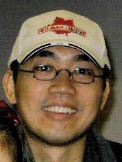 Developed a program to automate the comparison of the output of
multiple Galileo spaces on the same coordinates. Developed a program to automate the comparison of the output of
multiple Galileo spaces on the same coordinates.
Hao Chen
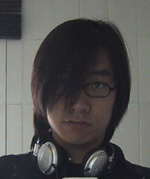 Constructed this very website and wrote many programs, including Katmandu (catpac for larger datasets), breaker (to quickly dump multiple rotated .crds into own files), and csv2gal (which converts .csv files such as limesurvey results to galileo format). Without csv2gal limesurvey work couldn't have happened, at least not as easily or quickly. He is also the one who figured out how to make combo .crd files. Constructed this very website and wrote many programs, including Katmandu (catpac for larger datasets), breaker (to quickly dump multiple rotated .crds into own files), and csv2gal (which converts .csv files such as limesurvey results to galileo format). Without csv2gal limesurvey work couldn't have happened, at least not as easily or quickly. He is also the one who figured out how to make combo .crd files.
Brenda Battleson
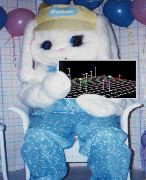 First in the librarian contingent, guru of both Listiac and Catpac, her impeccable grasp of the big picture also allows for trees. She is especially interested in Social Network Analysis, Information Organization, Knowledge Management, and Bibliometrics. Her good judgment, spot on intuition, initiative, and willingness to assist younger scholars make her both an invaluable team player as well as a leader. First in the librarian contingent, guru of both Listiac and Catpac, her impeccable grasp of the big picture also allows for trees. She is especially interested in Social Network Analysis, Information Organization, Knowledge Management, and Bibliometrics. Her good judgment, spot on intuition, initiative, and willingness to assist younger scholars make her both an invaluable team player as well as a leader.
Carolyn Evans
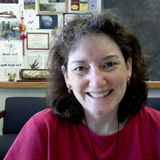 Loved galileo surveys and wanted others to have fun too (using pen/paper, cgi forms, galileo matrix, .asp forms, limesurvey, limesurvey with sliders); believes Galileo surveys make relationships between objects not necessarily consciously connected explicit, thus allowing you to learn useful things about your own thought (especially considered in conjunction with results from others). Turned AQM into limeAQM with Joe's help and slightly modified breaker, did basic work on both criterion pairs and shared meaning, used images & sound as objects, ran a gazillion food, emotion, and snowman surveys, and taught everyone whatever they wanted to know if she knew it... Loved galileo surveys and wanted others to have fun too (using pen/paper, cgi forms, galileo matrix, .asp forms, limesurvey, limesurvey with sliders); believes Galileo surveys make relationships between objects not necessarily consciously connected explicit, thus allowing you to learn useful things about your own thought (especially considered in conjunction with results from others). Turned AQM into limeAQM with Joe's help and slightly modified breaker, did basic work on both criterion pairs and shared meaning, used images & sound as objects, ran a gazillion food, emotion, and snowman surveys, and taught everyone whatever they wanted to know if she knew it...
Hyunjung Kim
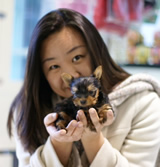 Quick to see connections and update procedure, her intense curiosity
drives her to learn new things each day. Recently she learned endnote and endnote web (mysterious but most useful) for both the Haller and Catpac bibliographies. Her html and database experience are welcome, her finding skills are awesome...and oh yeah, she's made quite a few instructions on how to use stuff too (<--this was written by Carolyn and approved by Hyunjung, whose modesty prevented a full account of her vast experience and knowledge). Quick to see connections and update procedure, her intense curiosity
drives her to learn new things each day. Recently she learned endnote and endnote web (mysterious but most useful) for both the Haller and Catpac bibliographies. Her html and database experience are welcome, her finding skills are awesome...and oh yeah, she's made quite a few instructions on how to use stuff too (<--this was written by Carolyn and approved by Hyunjung, whose modesty prevented a full account of her vast experience and knowledge).
Other Excellent Recent Scholars:
Hea Sun Chun, Leslie Dinauer, Mike Egnoto, Jang Kim, HyunJoo Lee, Yonsoo Lim, Joe Loporcaro, Kristen Lovejoy, Devon Rosen, Arun Vishwanath, Julie Zhu.
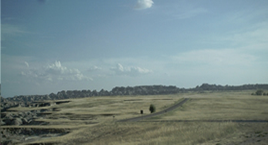
.....
....the road goes ever on...
|
|

